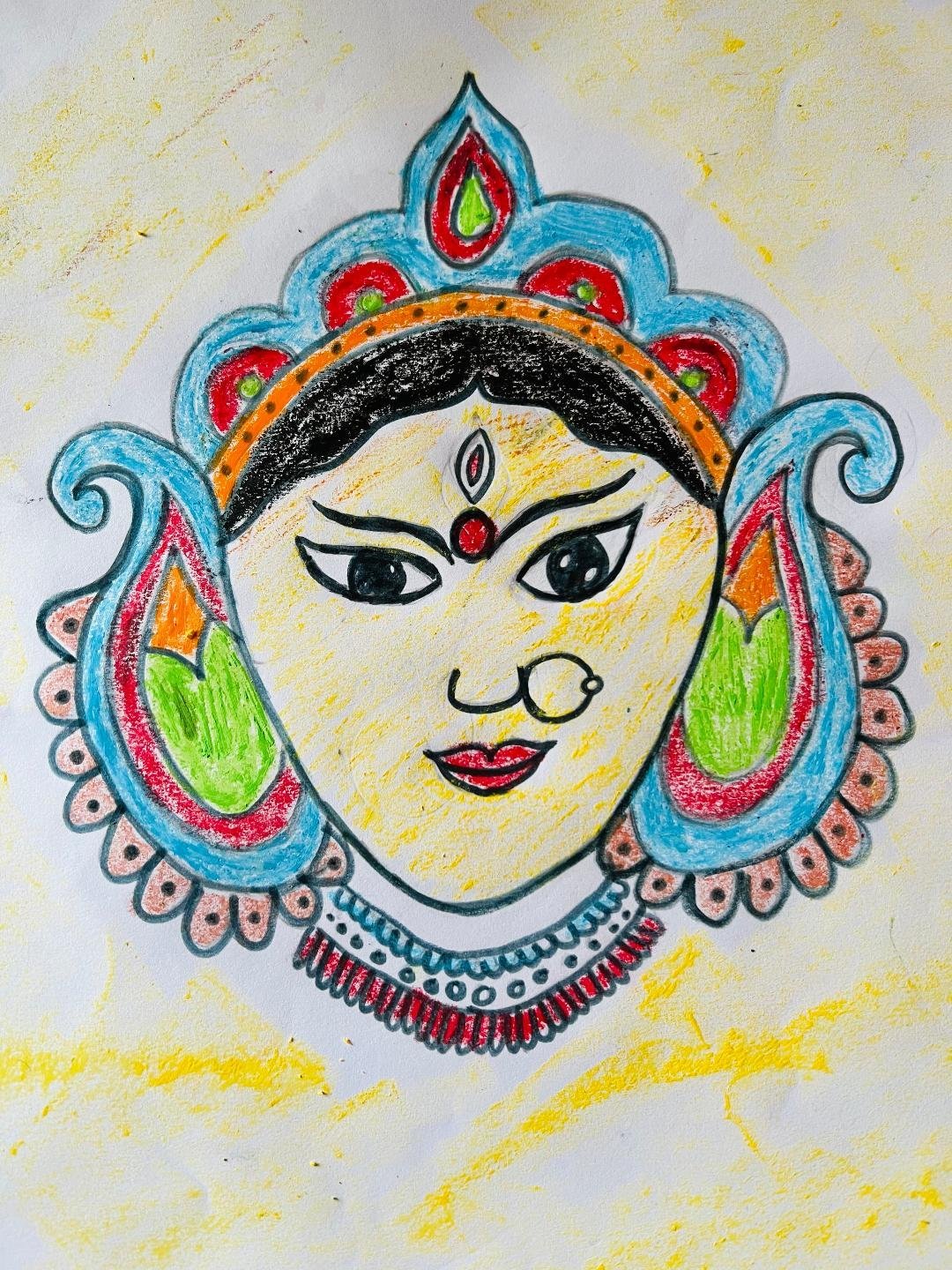Annual Day Celebration, Sep 2022
Saturday, September 17th and Sunday, September 18th 2022
The first annual day of Vivekananda Vedanta Center, Connecticut (VVCC) was celebrated in a grand scale over a two days event. Swami Atmajnanananda ji initiated the program with opening remarks, followed by Puja, Veda Chanting and discourses. Several lectures and discussions were held by Swami Sarvadevananda ji, Swami Sarvapriyananda ji, Swami Yogatmananda ji. A panel was setup for question answer and clarifications. We remembered Swami Swahananda ji on this special day and played his videos. Several messages of Swami jis’ from other centers were played in the video.
Mahishasura Mardini and the nine forms of Ma Durga
Nine forms of Durga represent different aspects of the feminine divine power, signifying a journey of spiritual growth through various stages like innocence, devotion, knowledge, motherhood, and ultimate power, allowing devotees to connect with their inner strength and overcome obstacles by worshipping each form during Navratri festival.
Nine Forms of Durga
During Navaratri (nine days of celebration) in each of the day one from of Ma Durga is worshipped
Shailputri (First day): Represents the daughter of the mountain, symbolizing innocence and new beginnings.
Brahmacharini (Second day): Represents the devoted student, signifying the pursuit of knowledge and spiritual discipline.
Chandraghanta (Third day): Represents the fierce warrior, signifying the power to destroy evil.
Kushmanda (Fourth day): Represents the cosmic egg, symbolizing the creation of the universe.
Skandamata (Fifth day): Represents the motherly aspect, signifying nurturing and care
Katyayani (Sixth day): Represents the powerful warrior goddess, signifying courage and strength
Kalaratri (Seventh day): Represents the darkest form of Durga, signifying the power to overcome darkness and negativity
Mahagauri (Eighth day): Represents purity and peace, signifying the radiant light within
Siddhidatri (Ninth day): Represents the giver of knowledge and spiritual power, signifying the ultimate goal of enlightenment
VVCC Choir Presentation
VVCC Adult and Youth Choir presented a special program on Mahishasura Mardini. The nine forms of Durga, also called Navadurga was presented by the Youth Choir.
The Youth Choir narrated Mahishasura Mardini and explained the 9 forms for Goddess Durga. The Adult Choir sang Mahishasura Mardini songs in between the narratives. The Youth and Adult Choir participants drew pictures of different forms and Maa Durga and Durga Puja Celebration. This event made the youth think about Devi Durga and express their imaginations through their artwork.
Mata Brahmacharini
The name Brahmacharini comes from Sanskrit words that mean "one who practices or pursues". "Brahma" means asceticism or self-discipline, and "charini" means conductor. She represents purity, calmness, and spiritual wisdom. Her color is red, which symbolizes love and passion. The flower used to worship her is jasmine.
Illustration : Upali Nag
Mata Katayani
She is the sixth of the Navadurgas, the nine forms of Durga. She is also known as Mahishasurmardini, which means "the goddess who killed Mahishasura". According to the Vamana Purana, the gods combined their energies to create Maa Katyayani to defeat the demon king Mahishasura. She is often shown riding a lion, with four, ten, or eighteen hands. In her left hand she holds a sword and a lotus, and in her right hand she holds the Abhaya and Varada mudras.
Illustration : Upali Nag
Mahishasura Mardini
In bengal, the Mahishasura Mardini form of Ma Durga is more commonly celebrated. The Choir performed quintessential Mahalya songs – Ya Chandi and Jago Tumi Jago.
Goddess Chandi - By Aishani Nag
Awakning of Durga - By Soham Sarkar
The song Ya Chandi worships the annihilator from of durga, slayer of deamons. Whereas the song Jago Tumi Jago celebates the savior form of Durga.
The youth members illustrated the different forms in their interpretation.
Swami Vivekananda started Durga Puja celebration at Belur Math. He performed Kumari Puja on this event. Durga Puja was first celebrated at Belur Math in 1901. Swamiji wanted to institutionalize respect for divinity of motherhood and sanctity of womanhood.
The members of the youth choir represented Ma Durga as they see
Maa Durga - By Aditya Guha
Durga esheche (Maa Durga has arrived)
- By Riddhima Roy
Mahishasura Mardini – By Mandrita Guha
Maa Durga – By Yuvaraj Das
Durga Puja Celebration – Dhaki playing Dhak
- By Samarth Sarkar
Durga Puja is incomplete without the rythmic sound of Dhak during the puja and arati.
The dhak is a large, one-sided drum that is a central part of Durga Puja. the dhak is played by traditional drummers called dhakis, who perform different beats and tunes for each ceremony. The dhak's rhythmic beats are a key part of the festival, and people of all ages dance to the sound of the dhak.
The presentation by VVCC Choir was highly appreciated by Maharaj and all Swamis and Bhaktas. Bengali Association of Greater Hartford invited VVCC Choir to perform Mahishasura Mardini at BAGH Durga puja on October 2024.

















